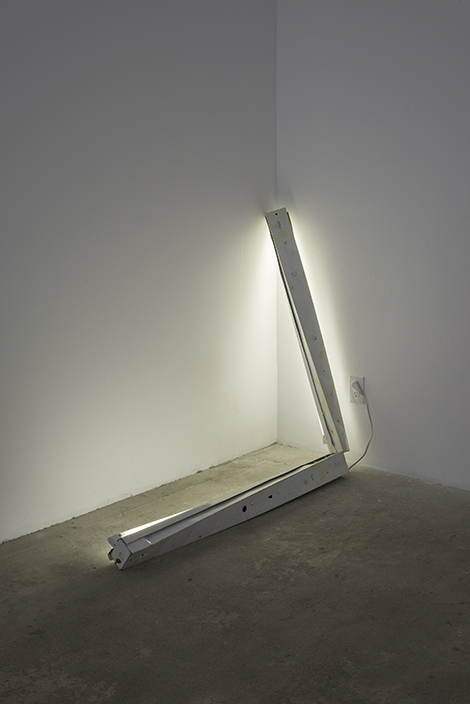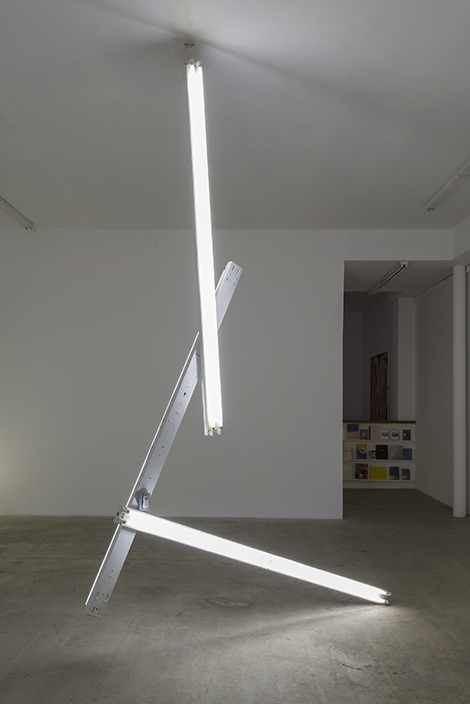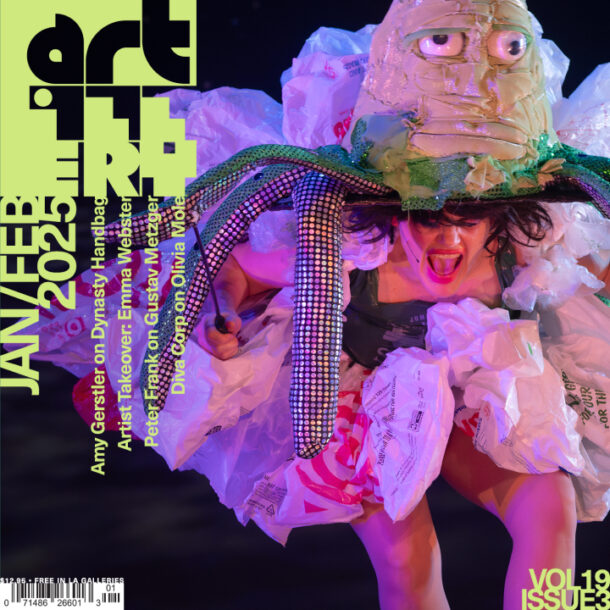The show’s title, “1993 to 2011,” gave some indication of the artist’s preoccupation with the relative ‘curve’ of time; but that was scarcely half of it. Clark took full advantage of the space-time manifold within the gallery’s rectangular ‘white cube’ space, not merely re-contextualizing his quasi-Minimal light sculpture, Tibia Plateau (1993–2011), but deconstructing and activating the entire space by way of light, shadows and reflections, and in turn their subtle alterations, dispersions and manipulations by way of readymade and additional elements (phosphorescent paint and motion sensors, in this instance), and the movement of the viewers themselves. A casual or first-time visitor might be excused for assuming the gallery was undergoing top-to-bottom structural-electrical repairs, or that a seismic temblor had shaken the fixtures from the ceiling. The gallery’s directors gave the artist full rein to alter the space as the work required; and Clark used the gallery’s own built-in fluorescent lights, suspending or entirely separating them from the ceiling.
Both initial and cumulative effects kept the viewer off- balance from start to finish. The viewer might conceivably enter an almost entirely darkened space, successively triggering the lights activated by motion detectors, casting variously white, pale pink and chartreuse lights around their immediately surrounding space. Depending upon the number of viewers in the space, there might be some corresponding, mirroring or re-balancing effect as lights triggered in another part of the gallery threw off another pool of light—and the configuration of the space as a whole: in effect, a spatial ‘curve’ in microcosm. As if to underscore the skewing of that three-dimensional axial geometry, three of the pieces (each using three fluorescent lighting elements) were simply titled A3, B3 and C3 (all 2015). Each mocked the notion of perpendicularity in a kind of suspended di Suvero- or Caro-esque fashion, with one element dangling from the ceiling as the other elements (one brushed with phosphorescent paint, as if to indicate another dimension) intersected or attached tangentially in their descent to the gallery floor.
The “1993 to 2011” of the show’s title referred to the (presumably) various site-specific iterations of “Tibia Plateau”—which clearly became the template for all of these works as well as the show’s concept. Tibia Plateau, may come closest to the abscissa-ordinate relationship of conventional geometries, but only by specific reference to its analogue relationship to the body. The work refers to the knee joint in that the tibia plateau is where the upper-most prominence of the tibia meets the femur in the joint capsule. Presumably there would an analogous “radiance” if the joint were turned in the manner the light elements were presented here. But the larger point was the way discrete zones of light converged, bending our sensation of the space as much as the light. The other titled installation consisted of a single element placed in the painted alcove/gallery space in the gallery that was triggered as the viewer moved into it. The piece, titled “You’ve got me,” clearly referenced the viewer’s purchase on both surrounding space and actual perception of it—a soft-focus Klein-esque “void.” And not unlike that Klein, it successively encapsulated the viewer’s reception of this raw but elegant show.



